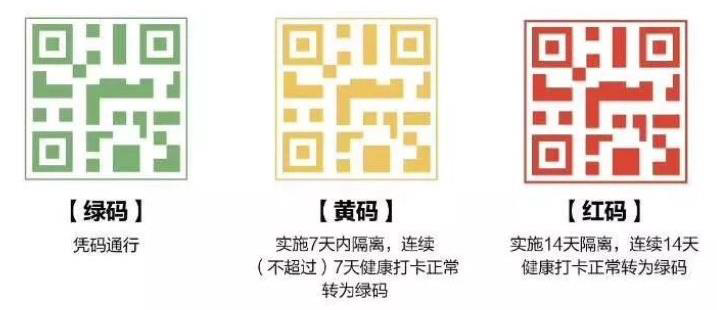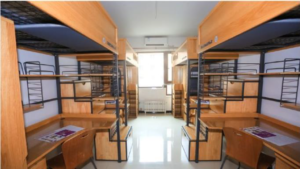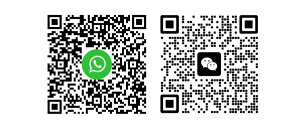How China is controlling the spread of the epidemic
On 31 October, all guests at Shanghai Disneyland in China were informed to undergo a nucleic acid test before leaving the park. This was because Shanghai Disney discovered that a guest who had just been diagnosed with COVID-19 had visited the park the day before.
On the morning of November 1, the CDC announced that all 33,863 visitors had negative nucleic acid results. Many Chinese Internet users appreciated the speed of this response.

Since the outbreak in early 2020, China has gradually developed a sophisticated system for controlling and tracking covidemic outbreaks. Whenever a new case is discovered, Chinese CDC authorities will cut the chain of transmission of the outbreak as much as possible by regulating regional risk levels, tracking close contacts with big data, and widespread universal nucleic acid testing. As a result, we can see that China has seen very few scary infection figures in the recent past. How does this system manage to work quickly and what is the intuitive impact on people’s lives?
Regional Risk Levels
In China, different areas are labelled into three levels based on the number of confirmed patients within 14 days: high risk, medium risk, and low risk areas. This classification can be adjusted for a particular province, city, district, township, or community. The list of tagged areas will be used as the main reference for airports, hotels, communities, etc. to decide whether or not to accept transient people. Areas that have been adjusted to medium or high risk will be reverted to low risk after all local cases have been cleared and no new cases have been identified and assessed by disease control experts.
Health Codes
The Health QR Code system was introduced in various regions of China from 2020 onwards, and it contains personal, health and travel information. One of the most critical elements of the system is travel information, which, in addition to obtaining booking information such as airline and train tickets, also tracks the areas a person has visited in the past 14 days by the cities they have visited through their mobile phone signal. In some public areas, travellers are also asked to scan place codes on the spot to get a more accurate picture of exactly when each person travelled and where they arrived.
By updating this information, the health codes are divided into three colours to indicate different levels of health risk.
- Green indicates a low level of risk. Access to public places such as shopping malls and underground stations is usually possible by simply showing the QR code and taking your temperature.
- Yellow indicates a possible recent visit to a medium to high risk area and will be advised to isolate at home and refused access to public places or public transport.
- Red indicates possible exposure to a confirmed case and requires immediate nucleic acid testing and a travel ban.

Having a green health code is an essential prerequisite for normal travel or business trips. Consequently, there is now an interesting way of greeting Chinese friends beyond asking if they are having a meal: “Is your health code still green?”
Massive Testing for Coronavirus
As mentioned at the beginning of the article, in areas where confirmed cases are found, CDC departments usually arrange mass general screening, working to get everyone in the region who may be at risk of exposure to complete a COVID-19 test in the shortest possible time.
In a guide for the Organisation and Implementation of COVID-19 Testing for the Whole Population (Version 2) published by the National Health Commission in September, for cases where there is a need for full population testing, cities with a population of 5 million or less are required to complete testing for the whole population within 2 days, while larger cities receive a deadline of 3 days in this matter.
This means that every city in China needs to be ready with the necessary equipment and personnel to do the testing on every resident and produce the results in a rapid manner. When the risk level rises, they will carry out the tests immediately according to a pre-planned procedure to try to identify cases from blind spots and carry out subsequent epidemiological investigations as quickly as possible.
Challenges Related to Epidemic Control
When the green QR code becomes a ticket to freely get around, most people understand and are willing to cooperate with the rules that arise to help control the further spread of disease at this time, where possible. However, this inevitably raises a couple of problems. Firstly, screening against the chain of transmission of the virus somewhat exposes privacy. The itineraries of those diagnosed are made public on various platforms, while every trip made by citizens is monitored by health surveillance information in order to track it. Many people will be worried that the current exposure of their identity and itinerary will create some long-term risks. Furthermore, some vulnerable groups were overlooked by society during the epidemic. Travel for the elderly and disabled is particularly difficult at this time, and even though society is helping as much as possible through volunteers and other means, there are still many places where elderly people are turned away because they are not proficient in using smartphones. It is also difficult to understand the sudden changes in the community’s vaccination policy for those who do not have access to real-time news and policy updates through multiple social media platforms. However, these issues are increasingly being recognised and effective solutions are still being explored.
Deviations In Implementation And Over-Reaction
China has a large population and a large number of administrative levels, so even though there is a unified approach as described above, there are variations and discrepancies in the implementation of epidemic prevention actions in different regions. Some provinces and cities have been known to overreact to the presence of one case affecting the daily travel of millions of people, while others have complained about lax management in their own communities where the health codes for visitors are not strictly scrutinised.
Interestingly, the Y Suites China team experienced the precision and speed of such investigations during a business trip last month. On the day they travelled from Changsha, China to another city, they received news of a confirmed case in Changsha who had travelled to the city from Shaanxi Province. They then experienced how the prevention and control department of the destination city was able to sort out the Changsha travellers as quickly as possible to enhance the review of their historical travels. The team received calls that night from the epidemiological investigation departments of several cities to double-check that they had not crossed paths with the diagnosed person during their trip. Even so, some of the co-operating partners travelling with them received varying degrees of travel restrictions when they returned home. And their health codes, fortunately, have remained a healthy green so far. But because of the increased alert levels in several cities, they will be travelling more cautiously in order to protect their green QR codes for themselves and their families.








